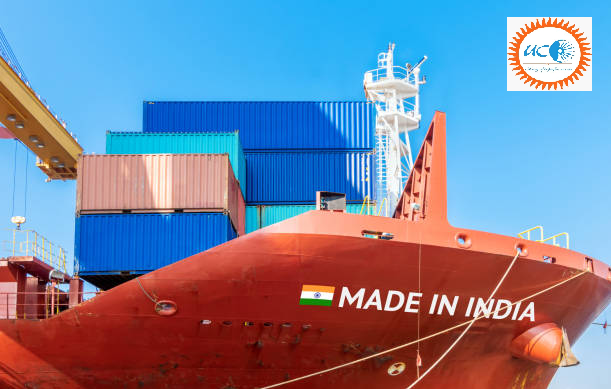In the financial year 2021-22, Indian merchandise exports have crossed the 400 billion USD mark. Identify the reasons for this spectacular performance of Indian exports and suggest reforms to further boost the exports.
Approach:
- Introduce the answer by highlighting the merchandise export data.
- In the body of the answer, discuss the factors responsible for this performance.
- In the next part of the body, discuss the remaining challenges associated with enhancing exports.
- In the last part, discuss the ways to further improve the export paradigm from the country. Conclude the answer by highlighting the importance of export led growth.
India has achieved an ambitious target of $400 billion in merchandise exports for the first time. India’s spectacular performance with regard to merchandise exports paints a sanguine picture for its role in global supply chains in post-COVID era. Several factors/government initiatives have been responsible for the attainment of this behemoth target, such as:
- Remission of Duties and Taxes on Exported Products (RoDTEP): WTO compliant RoDTEP scheme is an improvement over Merchandise Export from India Scheme (MEIS). It provides the domestic industry a level playing field vis-s-vis global companies by timely reimbursing central, local and state taxes/duties.
- Development of districts as export hubs: District Export Promotion Committees (DEPCs) have been set up in each district to give a fillip to exports. Products with export potential (including agricultural, geographical indication (GI) & toy clusters) have been identified in all 739 districts across the country.
- Production-Linked Incentive (PLI) scheme: Production-Linked Incentive (PLI) have been initiated for 14 key sectors starting from 2021-22. The scheme provides incentives to companies on incremental sales for products manufactured in domestic units. The scheme has given a boost to both domestic manufacturing and exports.
- Regulatory overhaul: In order to promote ease of doing business and reduce the logistics cost, single window clearances are being provided to the exporters.
- Convergence of efforts: Convergence between Ministry of commerce and Ministry of External Affairs (MEA), helped in identification of right products and right destination. E.g., Personnel in Indian missions abroad gave important inputs about the demand of products in their country of posting.
- Training and capacity building: Initiatives like Niryat Bandhu scheme have helped in improving the quality and standards of products, thus boosting exports.
Despite a spectacular performance, there are certain challenges that remain:
- Stiff competition from economies like Vietnam and Bangladesh; both countries have similar competitive advantage as India.
- The Russia-Ukraine crisis poses a risk for global trade. High shipping rates, container shortages etc., may become a challenge.
- Bureaucratic red tape/apathy, structural/logistical shortcomings etc., continue to be a significant challenge.
- India’s participation in the Global Value Chain is still minimal.
Even as the merchandise exports from the country have improved there is a need to take reform measures in order to remove the bottlenecks:
- There is a need to bring down the high logistics cost. E.g., In India the logistics cost stands at more than 13% of GDP.
- There is a need for development of port specific masterplans and a supplementing a coordination mechanism.
- Technological interventions in trade and commerce activities can prove to be a significant contributor in reducing cost, increasing efficiency and ensuring security. E.g., introduction of FASTAGS, mandatory RFID (Radio Frequency Identification) etc.
- Establishing more SEZs (Special Economic Zones), making them WTO compliant, adopting global best practices and maximizing capacity utilization etc.
- Bridging the gap in the efficiency of trade-related infrastructure can lower the cost of doing business.
- Constructively engaging in Free Trade Agreements (FTAs), can aid the domestic manufacturers to become a part of the global supply chain.
India needs to promote export oriented, labour intensive, sunrise sectors in order to boost the economic growth in a sustainable manner. To this end, there is a need for the government to take comprehensive steps in synergy with the private sector.






